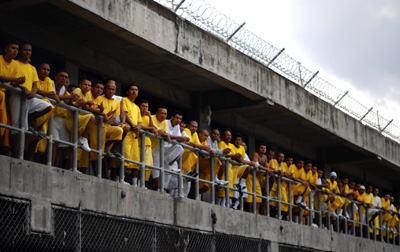After the Salvadoran online newsmagazine El Faro exposed a secret government deal with criminal gangs last month, its staff faced repercussions that illustrate the new and complicated risks facing journalists worldwide. El Faro‘s report, which said the government provided more lenient treatment of imprisoned gangsters in exchange for the groups’ agreement to slow down their murderous practices, addressed one of the most sensitive topics facing journalists today–crime and its many interconnections with government.
Research by the Committee to Protect Journalists, where I serve as senior adviser for journalist security, shows that crime and politics are the two most common beats among murdered journalists. The understanding that they are the riskiest topics has come into sharp relief only in recent years–and is one of many reasons that CPJ this week released a new edition of its Journalist Security Guide.
In El Faro‘s case, the government initially denied making a deal with the criminal gangs even as the country’s homicide rate dropped suddenly to a level not seen in two years. More insidious, though, were the government’s other reactions to El Faro‘s story. Security Minister David Munguía Payés summoned members of several major media organizations–but not El Faro–to a meeting at which he said the outlet’s story had put its staffers at grave risk. Munguía Payés said gang members were angered by the piece and, ominously, he reminded reporters of the 2009 murder of a French journalist who had produced a film on gang activities. It was only the next day that Munguía Payés spoke directly to El Faro about the threats and, even then, he offered the staff no protection. Coincidentally or not, unidentified individuals were following and photographing El Faro journalists, editor Carlos Dada told CPJ.
What to do in a situation like that? Working with El Faro, CPJ and regional organizations began an intensive effort to publicize the case and demand the government respond substantively to the threats its officials were so eagerly discussing. The engagement forced Munguía Payés and the office of President Mauricio Funes Cartagena to acknowledge their responsibility to protect El Faro and promise that security efforts would be undertaken.
News organizations such as El Faro that publish primarily or entirely online are now in the thick of front-line, in-depth journalism, as evidenced by the U.S. Pulitzer Prizes awarded in the last two years to the news outlets Huffington Post, Politico, and ProPublica. With the attention has come risk. Murders of online journalists, once a rarity, now make up about 20 to 25 percent of journalists slayings worldwide, CPJ research shows.
The shift is another major difference CPJ has seen in the years since it published the earlier edition of its security guide, back in 2003, after the war in Iraq had begun. In preparing our new guide, it became clear that the profession and the threats facing journalists have changed dramatically in the last decade.
For one, more front-line newsgatherers are now working on their own. Whether they are reporters in Mexico using social media to report crime news, local videographers documenting unrest in Syria, freelance foreign correspondents filing from Afghanistan, or stringers working for local TV stations across the United States, journalists work increasingly with little or no institutional support.
The threats are changing as well. Coverage of political unrest has proved deadly in the past two years, with photojournalists paying a particularly high price. The risk of sexual assault has become widely known after the well-publicized mob attack against CBS News’ Lara Logan in Cairo last year. It’s clear that digital security training has become essential in protecting confidential sources, even if the profession has been slow to respond.
The field of journalist security has had to evolve in response to these changes. It was only 20 years ago that news organizations first began hiring private firms to provide security training to their journalists. The courses, coming as they did in response to conflicts such as the first Gulf War, were heavily weighted toward combat hazards and emergency first aid. But many local journalists, facing diverse threats, were still at a loss. Like those at El Salvador’s El Faro, these local reporters face a far greater risk of being followed and murdered than of being killed in crossfire.
Today, international and regional organizations have begun developing their own security protocols, often tailored to the particular needs of their region or topic. The Organized Crime and Corruption Reporting Project in the Balkans has added surveillance detection and the use of tracking devices to keep watch on reporters interviewing organized crime figures. IDL-Reporteros in Peru has begun personal safety awareness and self-defense training. With its new security guide, CPJ hopes to add to the profession’s growing understanding of safety issues.
In a world where a reporter, photographer, editor, blogger, commentator, or producer is killed once a week–most of the time murdered–it’s clear that security must become a core function of being a journalist.
